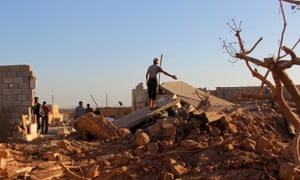
Samer al-Ahmad:
'Whenever I hear the word Aleppo I think of my friend, a lawyer called Ibrahim Malki. This time last year he and I were fellow detainees in a crowded cell where we slept next to each other – it was only three metres long and six metres wide but was home to more than 20 prisoners. We’d both been arrested by the regime. I had been accused of sending news to opposition media. Ibrahim was arrested for being a political and human rights activist.
After 20 days of living together, talking and sharing torture sessions our friendship was cemented. But soon we would be transferred to different facilities.
While I continued to be tortured, accused of being a terrorist, Ibrahim was witnessing his worst nightmare in a tiny cell in the capital, Damascus: he later told me how he watched young men die, their bodies thrown out like animals.
A month later, I was released after paying a bribe to a regime officer. A week after that, I heard that Ibrahim had also been released. Soon the regime started harassing me again so I left for Turkey; Ibrahim moved to Switzerland after the regime shut down his law firm. We talk weekly on Skype and he always says how what is happening in Aleppo breaks his heart, his beloved city that President Bashar al-Assad is trying to destroy.'
Sadek Abdul Rahman, a pseudonym used by an editor and writer at Al-Jumhuriya:
'I spent the first three years of the revolution moving between areas under the regime’s control. I witnessed people’s sadness, their fear and the deaths of their loved ones but persuading them to talk was the hardest part.
Everyone is scared to speak and even if they agree they only talk about what they should say, not what they want to say. Even if you are able to reassure them that you won’t reveal their names and identities you can feel their fear and confusion coming through in their words, but with time some people slowly started to trust me.
I was using a pseudonym to protect my identity so people were seeing an unknown person talking to unknown witnesses, and while this documentation is still important it is not the ideal way to do journalism.
Once, I wanted to document the story of a friend who was forced to fight in the regime forces: he was not pro-regime but he was not on the revolution’s side either – he didn’t want to fight anyone.
We tried to document his story during one of his holidays but it was impossible. Leaving out personal information rendered the story meaningless, but anything that hinted at either of our identities would have put us in danger.
Three years later we met in Istanbul, where we laughed, cried and talked for hours. He was preparing himself to go to Europe after successfully escaping from Syria.
But even in exile writing his story was impossible because it could implicate his family and friends who helped him to come to Turkey and are still living in areas under the regime’s control. A regime that is depriving Syrians from telling their stories even when they leave.'
Raed Razzouk:
'One day last September, after an excessive attack from jets and helicopters on my region of Idlib in northern Syria I decided it was time to to travel with my family, my wife and two kids, towards Turkey in search of safety.
Our first attempt to cross the borders failed and some of us almost got killed by gunfire from Turkish soldiers on the border. One man was shot in the leg and women and children were screaming and crying.
We fled to a nearby village where we found a mosque that we could rest in and found many people like us. At 3am we went back tried again and found a 1.5-metre-deep ditch to crawl through.
With my wife, holding my six-month-old in one arm and the eight-year-old in another, we reached a Turkish village and our first safe sunrise in three years.'

